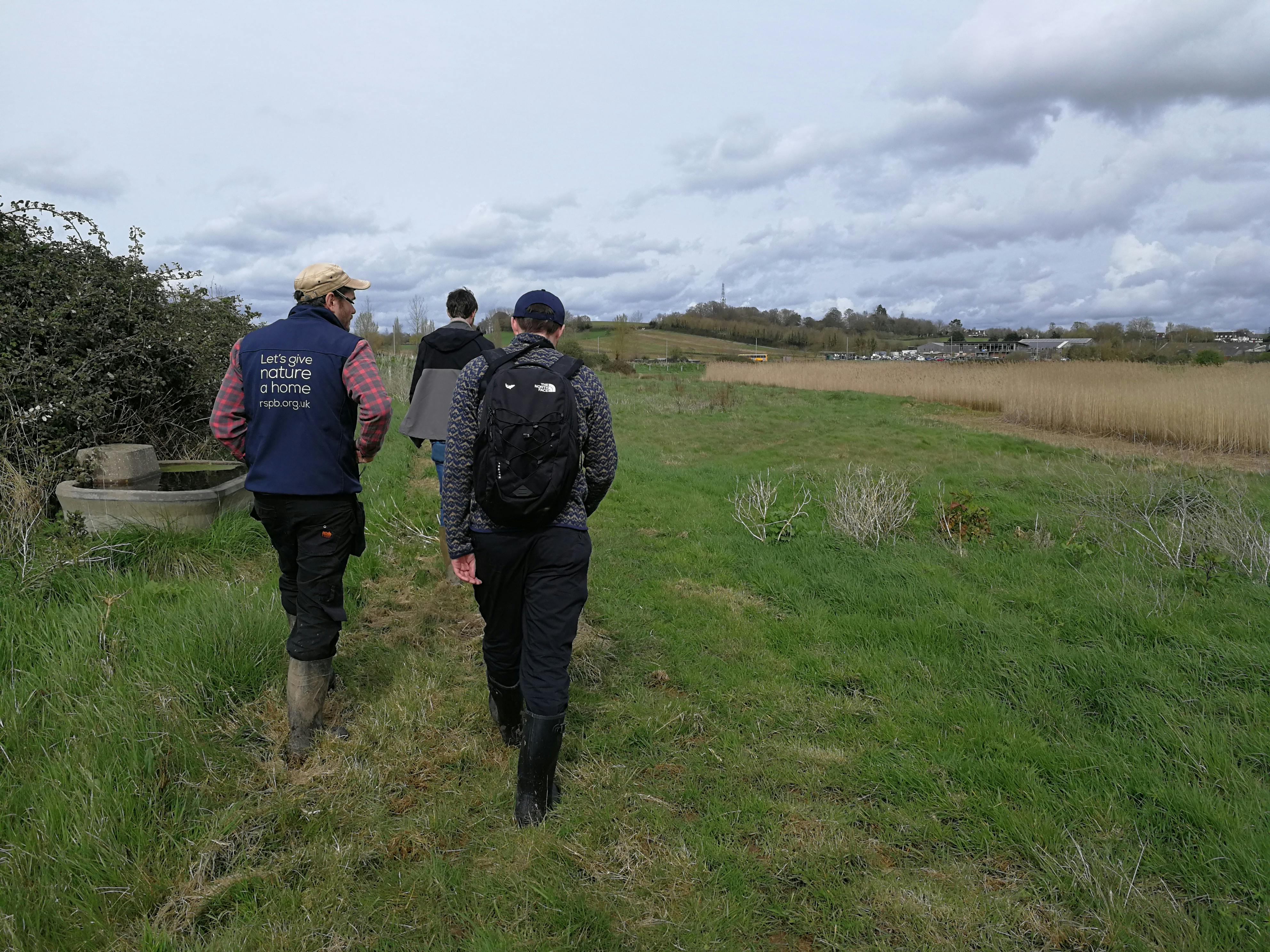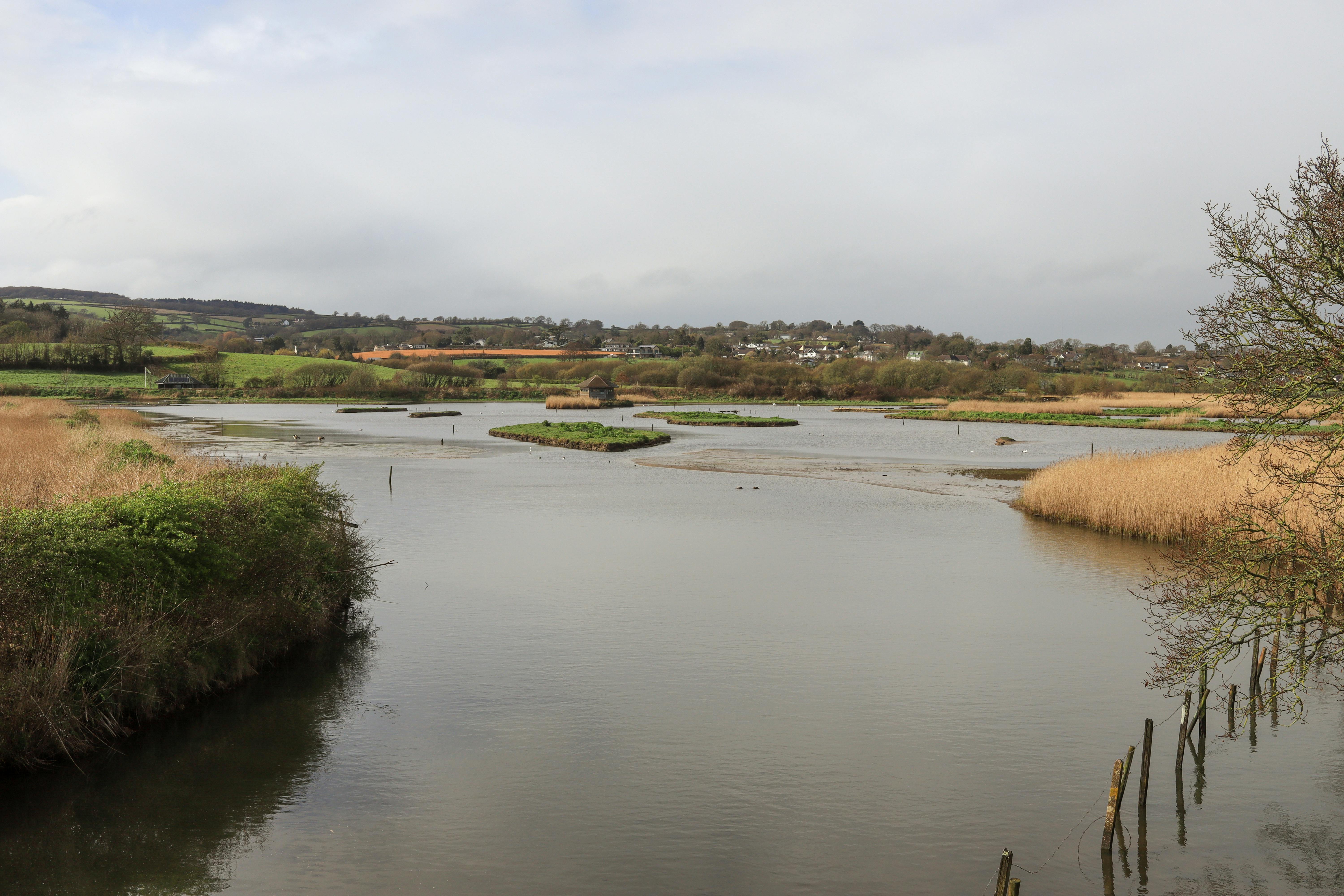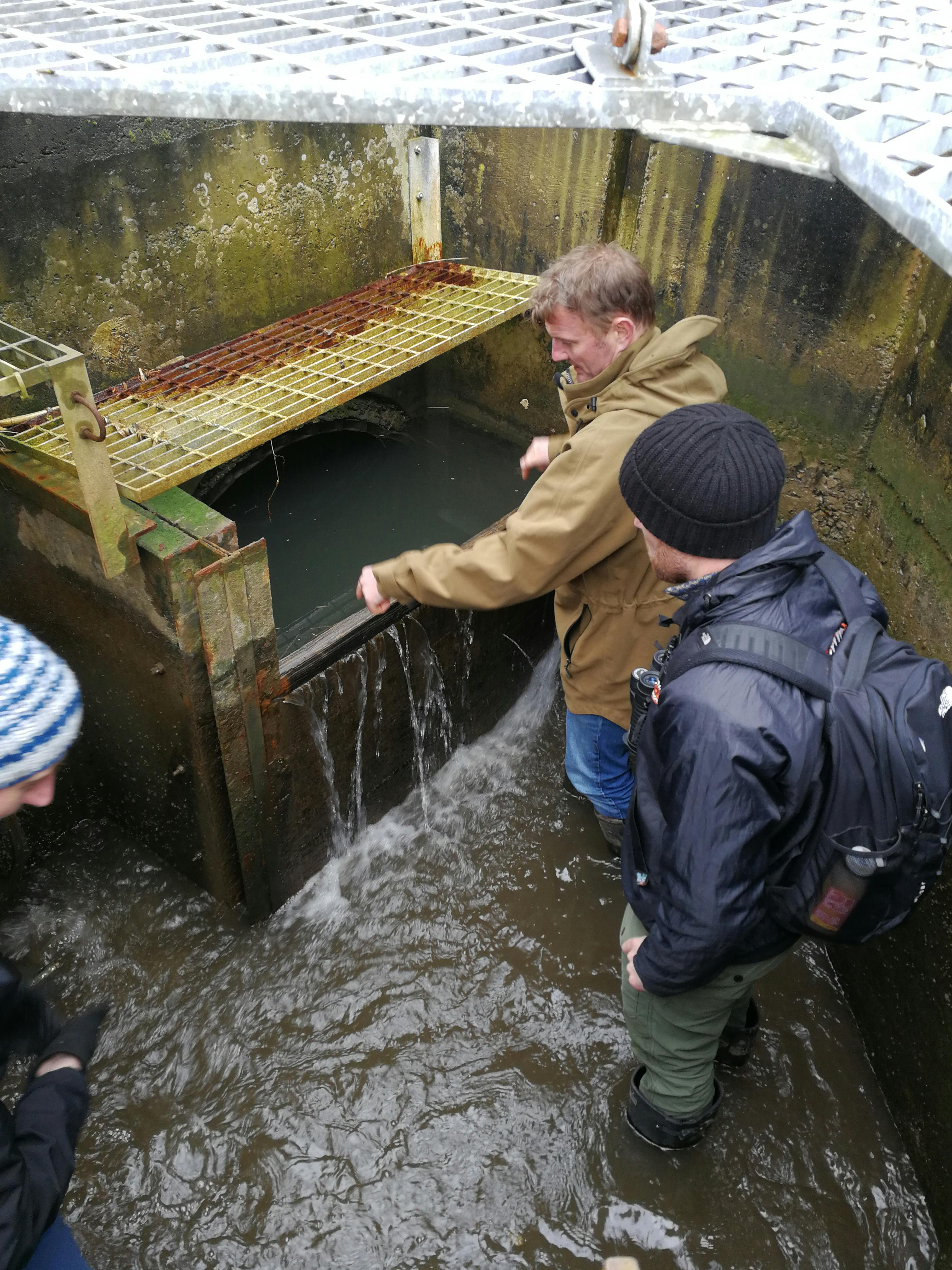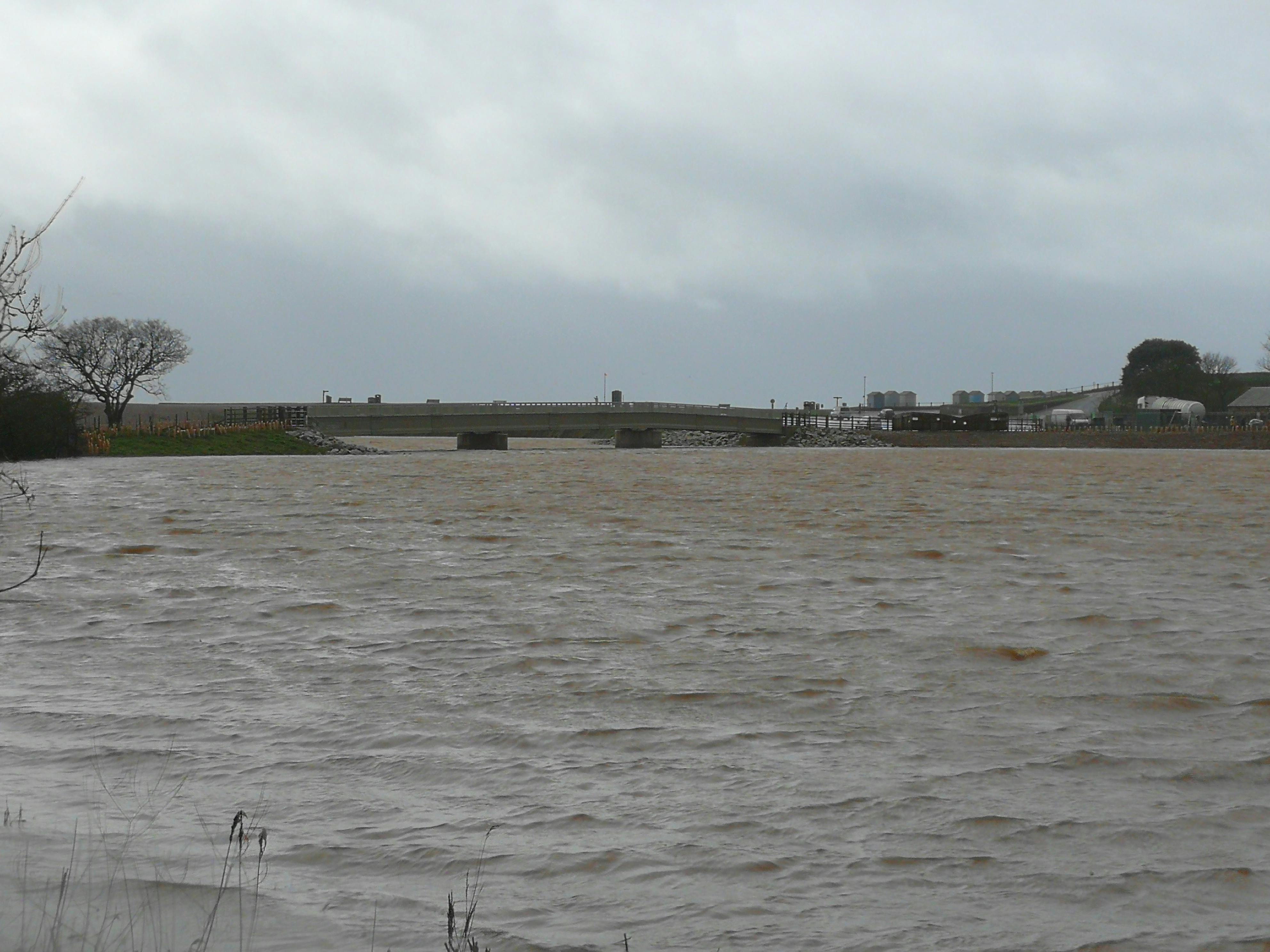In late March, our coastal and marine team, Chas Holt, Sherece Kesner, and Max Renton went on a knowledge exchange trip to Devon, to learn from the exciting coastal wetland restoration projects taking place there. Coastal wetland habitats, namely saltmarsh and coastal floodplain grazing marsh, play pivotal roles in fostering biodiversity and enhancing climate resiliency along estuarine seascapes. These habitats contribute significantly to the health of coastal ecosystems, serving as natural defences against flooding, dissipating wave energy, and storing carbon.

Goosemoor Nature Reserve
The first stop was Goosemoor Nature Reserve and Exminster marshes, managed by the Royal Society for the Protection of Birds (RSPB). Goosemoor was the first site in the UK to use Regulated Tidal Exchange (RTE). RTE allows controlled inundation of intertidal land via sluices and other engineered structures, allowing sea water through without the breaching of existing defences. The influx of saline water onto the land leads to the formation of mudflats and saltmarsh. The creation of saltmarsh did not happen as it was planned. Reed beds have overtaken much of the habitat. However, in some areas plant species associated with the saltmarsh habitat such as sea aster (Tripolium pannonicum), common seagrass (Zostera marina), and samphire (Salicornia europaea) are thriving. The saltmarsh is grazed by cattle to maintain a diverse sward to maintain the habitat and increase biodiversity.

Goosemoor Nature Reserve
RSPB then took us to Exminster Marshes, an area of freshwater grazing marsh. The site supports large numbers of waders and wildfowl, including breeding lapwing. Linear channels, meticulously crafted using spoil spreaders, crisscross the landscape, ensuring the optimal wetness crucial for sustaining the habitat. These waterways serve as lifelines, nurturing the diverse flora and fauna that occur on this marshland. In spring and summer, cattle once again graze upon the land, their presence shapes the sward's structure and enhances biodiversity.

Exminster Marshes
Our second stop was Seaton Wetlands, managed by East Devon District Council. The area is a saline lagoon. It attracts a considerable amount of wildlife, from wildfowl and waders to otters. A RTE gate is fitted to banks of the estuary which brings saline water into the lagoon.

Seaton Wetlands
Strategically fitted along the estuary banks, an RTE gate serves as a conduit, ushering saline water into the lagoon and creating the ecosystem. Under the close management of the East Devon District Council, water levels are carefully monitored and adjusted throughout the year, ensuring the perfect balance for both wildlife and habitat.

Seaton Wetlands RTE gate
During spring migration water levels are lowered, revealing vast expanses of mud and the invertebrates within, offering foraging opportunities for bird species. Then, during the wader breeding season, more water is brought in to create a suitable habitat for their needs. The lagoon supports an array of fish species such as seabass, eels, and mullet.
A shelduck foraging at Seaton Wetlands
Our third and final visit was to the Lower Otter Restoration Project, managed by the Clinton Devon Estates team. By far the largest coastal wetland restoration project we visited, stretching across a vast 55 hectares, the project looks to create new intertidal habitat (saltmarsh and mudflats) for wildlife by managed realignment. Managed realignment refers to the breaching of an existing coastal embankment originally constructed to allow coastal wetlands to be converted into agricultural land. The seawall is realigned landwards or short lengths of the coastal defence are either partly or entirely removed, creating a new intertidal area for saltmarsh colonisation.

Lower Otter Restoration Project
The need for the project comes down to the aging sea defences which were beginning to fail as a result of effects climate change. This posed a threat to public infrastructure, local businesses and homes, and recreational facilities. As a result, an approach which considered natures resilience was embraced with the formation of the Lower Otter Restoration Project. The aim is to restore the land to saltmarsh, reconnecting the river to its natural floodplain and buffer against rising tides and storm surges, mitigating the impacts of a changing climate while providing a sanctuary for wildlife to thrive. The seawall was breached in 2023 and the saltmarsh is expected to take 5 years to fully form.

Lower Otter Restoration Project
In conclusion, our trip to the restored coastal wetlands of Devon was hugely informative, giving us insights into how to design restoration projects in the future. Each stop offered invaluable lessons in design considerations. A huge thank you to Rob Johns from the RSPB, James Chubb from Devon District Council and Sam Bridgewater from Clinton Devon Estates for hosting us. These learnings will help guide us in current and future coastal wetland creation and restoration.






